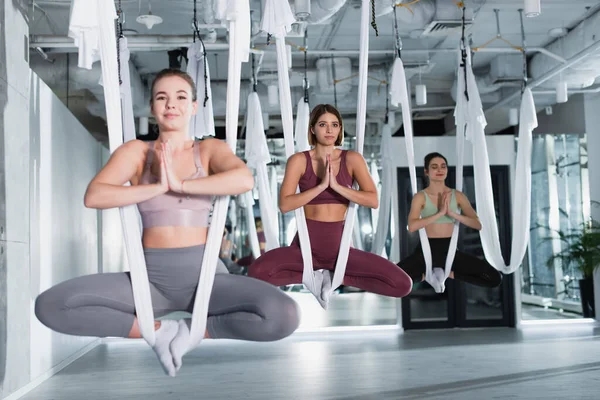Yoga is a global fitness trend that has gained popularity for its ability improve physical health, mental clarity and spiritual well-being.
Yoga is gaining in popularity and practitioners are looking for new ways to improve their practice. Blood flow restriction (BFR), or BFR straps, is one such method that has gained attention. Can these straps improve your yoga practice, though?
Understanding Blood Flow Restriction Training
A technique originally developed in Japan, known as “Kaatsu,” involves applying cuffs or belts to upper arms or lower legs to restrict mildly venous flow while exercising.
The goal is to reduce the blood flow out of the muscle group targeted without affecting arterial inflow.
It creates an environment in the muscles which is conducive to rapid muscle growth and strength. This is usually associated with intense workouts.
Application in Yoga
Yoga traditionally does not focus on muscle hypertrophy, or high intensity training. It’s more focused on flexibility, balance, strength, and balance.
By integrating BFRs into your yoga practice, you can add a whole new dimension to it.
Restricting blood flow to specific limbs can increase muscle activation and improve strength and endurance, even when practicing low-intensity yoga poses.
Potential Benefits
1. BFR helps to increase muscle strength and tone, even in gentle yoga styles. This is because it does not require high-impact, intense movements. This is especially beneficial for those who want to incorporate a strength component into their yoga routine.
2. BFR increases metabolic stress in the muscles. This promotes muscle growth and endurance. This is especially beneficial in yoga which does not usually have these benefits.
3. BFR Straps are useful for preventing and treating muscle injuries. They allow people recovering from injury to practice yoga without putting excessive strain on the muscles.
4. Regular use of the BFR straps can improve overall endurance and stamina, allowing you to do longer sessions or perform more advanced poses.
Safety Considerations
Although the use of BFR belts in yoga has potential, you should approach this practice with caution.
Consultation with Healthcare Professionals: It is essential that individuals with heart issues consult with a health care professional before beginning BFR training.
– Proper Technique: It is important to learn the correct technique for applying and using BFR straps to avoid any negative effects.
Start Slowly: Gradually integrate BFR straps in your routine. Begin with simpler poses and shorter lengths.
Integrating BFR Straps in Yoga Practice
Consider the following steps to effectively integrate BFR Straps into your Yoga routine:
1. Start with Simple Poses. Try simple poses first to familiarize yourself with the BFR sensation. Start with Tadasana or Virabhadrasana, which are both basic poses.
2. Watch Your Body’s Reaction: Be aware of how your body responds to BFR straps. If you feel any discomfort or pain, it is time to stop and assess.
3. Combination with traditional practice: Combine sessions with or without BFR straps for holistic benefits.
4. Seek Professional Guidance. If possible, seek out a yoga teacher who has had experience with BFR for advice and adjustments.
Integrating blood flow restriction bands into yoga is a fascinating convergence of modern exercise science and traditional disciplines. It offers many benefits, including increased muscle strength and stamina. However, this practice must be approached mindfully and with safety. BFR can be a game changer for those who want to explore new dimensions in yoga and deepen their existing practice.
For aspiring yoga instructors, understanding and possibly incorporating innovative methods such as BFR can be an important aspect of your training. Consider taking a yoga teacher training in Bali to learn about these innovative practices. It is important to consult a doctor and learn more about BFR straps before using them.
